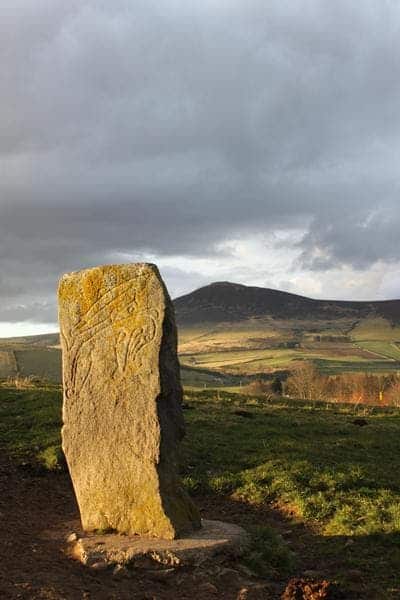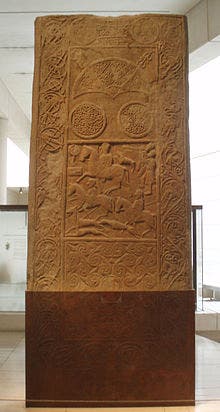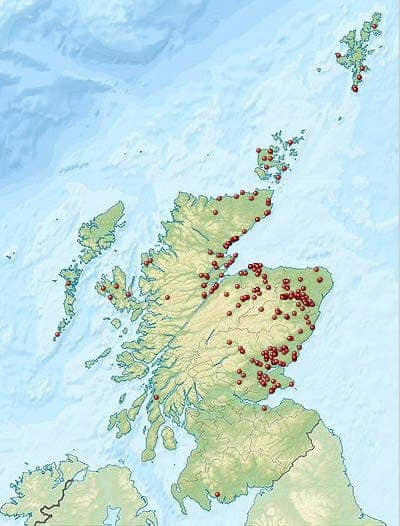The Romans were never able to exert their dominance over all of Britain due to the fierce resistance of northern tribes known as the Picts, meaning ‘Painted Ones’ in Latin. The Picts constituted the largest kingdom in Dark Age Scotland until they disappeared from history at the end of the first millennium, their culture having been assimilated by the Gaels. But although not very much is known about these people who dominated Scotland for centuries, evidence suggests that that Pictish culture was rich, perhaps with its own written language in place as early as 1,700 years ago, a new study found.

For a very long time, the ancient Roman Empire wanted to seize Scotland, known during Roman times as Caledonia. The province was the site of many enticing resources, such as lead, silver, and gold. It was also a matter of national pride for the Romans, who loathed being denied glory by some ‘savages’.
Despite their best efforts, the Romans never really conquered the whole of Scotland. The farthest Roman frontier in Britain was marked by the Antonine Wall, which was erected in 140 AD between the Firth of Forth and the Firth of Clyde, only to be abandoned two decades later following constant raiding by Caledonia’s most ferocious clans, the Picts.
But despite the constant conflicts, it seems like the Picts also borrowed some aspects of Roman culture that they found useful, such as a written language system.
Researchers at the University of Aberdeen claim that mysterious carved stones, some of the few relics left behind by the Picts, may actually represent a yet to be deciphered system of symbols. Teaming up with experts from the Scottish Universities Environmental Research Centre (SUERC), the researchers performed new datings of the archaeological sites where Pictish symbols had been found in the past.
“In the last few decades there has been a growing consensus that the symbols on these stones are an early form of language and our recent excavations, and the dating of objects found close to the location of the stones, provides for the first time a much more secure chronology. While others had suggested early origins for this system no direct scientific dating was available to support this. Our dating reveals that the symbol system is likely to date from the third-fourth century AD and from an earlier period than many scholars had assumed,” Gordon Noble, Head of Archaeology at the University of Aberdeen that led the archaeological excavation, said in a statement.

The new and more robust chronology helps define a clear pattern in both the likely date and the style of carvings. One of the most important excavations were performed at a fort in Dunnicaer seastack, located south of Stonehaven, Aberdeenshire. It was here that archeologists had found many stone monuments during the 19th century. The new examination suggests that stones came from the rampart of the fort and that the settlement was at its height between the 3rd and 4th century, the authors reported in the journal Antiquity.
Direct dating was also carried out on bone objects and settlement layers from sites in the Northern Isles. This analysis showed that the symbol system was used in the 5th century AD in the far north, the periphery of Pictland.

About 350 objects classified as Pictish stones have survived. The older of these artifacts hold by far the greatest number of surviving examples of the mysterious Pictish symbols. Picts carved their symbols on stone, bone, metalwork, and other artifacts, but did not employ paper writing.
If these symbols look familiar, know that they emerged around the same time as the Runic system in Scandinavia and some parts of Germany or the Ogham system in Ireland. All of these regions were never conquered by the Romans but researchers hypothesize that the close contact with the Romans, although mostly marked by violence, may have influenced the creation of proprietary writing systems outside the empire.
“Our new dating work suggests that the development of these Pictish symbols was much more closely aligned to the broader northern phenomenon of developing vernacular scripts, such as the runic system of Scandinavia and north Germany, than had been previously thought,” Dr. Martin Golderg of National Museums Scotland said in a statement.
“The general assumption has been that the Picts were late to the game in terms of monumental communication, but this new chronology shows that they were actually innovators in the same way as their contemporaries, perhaps more so in that they did not adapt an alphabetic script, but developed their own symbol-script.”
As for the meaning of Pictish writing, researchers say that it will likely never be deciphered in the absence of a text written in both Pictish and a known language. Until a Pictish ‘Rosetta Stone‘ is discovered, we’ll just have to settle with marveling at these monumental forms of communication.



